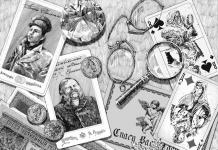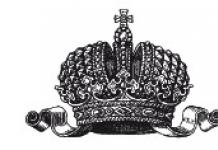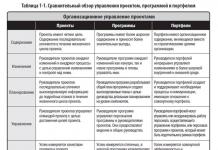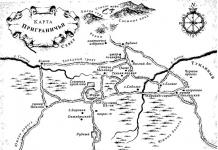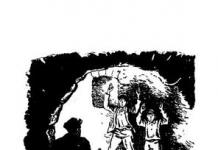With the development of civilization, human life has acquired value regardless of social status and wealth. It is all the more terrible to read about the black pages of history, when the law did not simply deprive a person of life, but turned execution into a spectacle for the amusement of ordinary people. In other cases, the execution could be of a ritual or edifying nature. Unfortunately, in modern history there are similar episodes. We have compiled a list of the most brutal executions ever practiced by humans.
Ancient world executions
Scafism
The word "scaphism" is derived from the ancient Greek word "trough", "boat", and the method itself went down in history thanks to Plutarch, who described the execution of the Greek ruler Mithridates at the behest of Artaxerxes, the king of the ancient Persians.First, the man was stripped naked and tied inside two dugout boats so that his head, arms and legs, which were thickly coated with honey, remained outside. The victim was then forcibly given a mixture of milk and honey to induce diarrhea. After that, the boat was lowered into stagnant water - a pond or lake. Lured by the smell of honey and sewage, insects covered the human body, slowly devoured the flesh and laid the larvae in the resulting gangrenous ulcers. The victim survived for up to two weeks. Death came from three factors: infection, exhaustion and dehydration.
Execution by impalement was invented in Assyria (modern Iraq). In this way, residents of rebellious cities and women who had an abortion were punished - then this procedure was considered infanticide. 
The execution was carried out in two ways. In one case, the convict was pierced in the chest with a stake, in the other - the tip of the stake passed through the body through anus... People who were tormented were often depicted on bas-reliefs as an edification. Later, this execution began to be applied by the peoples of the Middle East and the Mediterranean, as well as by the Slavic peoples and some Europeans.
Execution by elephants
This method was used mainly in India and Sri Lanka. Indian elephants lend themselves well to training, which was used by the rulers of Southeast Asia. 
There were many ways to kill a person with the help of an elephant. For example, armor with sharp spears was worn on the tusks, with which the elephant pierced the criminal and then, while still alive, tore apart. But more often than not, elephants learned to press down on the convict with their feet and alternately tear off the limbs with their trunk. In India, a guilty person was often simply thrown at the feet of an angry animal. For reference, the Indian elephant weighs about 5 tons.
Surrender to the beasts
Behind the beautiful phrase "Damnatio ad bestias" lies the painful death of thousands of ancient Romans, especially among the early Christians. Although, of course, this method was invented long before the Romans. Usually lions were used for execution, less popular were bears, panthers, leopards and buffaloes. 
There were two types of execution. Often those sentenced to death were tied to a pillar in the middle of the gladiatorial arena and wild beasts were lowered onto it. There were also variations: thrown to a cage to a hungry animal or tied to its back. In another case, the unfortunate was forced to go out to battle against the beast. They had a simple spear from their weapons, and a tunic from their "armor". In both cases, many spectators gathered for the execution.
Death on the cross
The crucifixion was invented by the Phoenicians - an ancient people of seafarers who lived in the Mediterranean. Later this method was adopted by the Carthaginians, and then by the Romans. The Israelites and Romans considered death on the cross the most shameful, because in this way they executed hardened criminals, slaves and traitors. 
Before the crucifixion, the person was undressed, leaving only a loincloth. He was beaten with leather whips or freshly cut rods, after which he was forced to carry a cross, weighing about 50 kilograms, to the place of crucifixion. Having dug the cross into the ground by the road outside the city or on a hill, the person was lifted with ropes and nailed to a horizontal bar. Sometimes the convict's legs were pre-crushed with an iron bar. Death occurred from exhaustion, dehydration, or painful shock.
After the prohibition of Christianity in feudal Japan in the 17th century. crucifixion was used against visiting missionaries and Japanese Christians. The scene of the execution on the cross is present in Martin Scorsese's drama Silence, which tells exactly about this period.
Execution with bamboo
The ancient Chinese were champions of sophisticated torture and execution. One of the most exotic methods of killing is by stretching the culprit over the growing shoots of young bamboo. The sprouts made their way through the human body for several days, causing incredible suffering to the executed. 
Ling chi
"Ling-chi" is translated into Russian as "sea pike bites." There was another name - "death from a thousand cuts." This method was used during the reign of the Qing dynasty, and high-ranking officials convicted of corruption were executed in this way. There were 15-20 such people every year. 
The essence of "ling-chi" is the gradual cutting off of small parts from the body. For example, having chopped off one phalanx of a finger, the executioner cauterized the wound and then proceeded to the next. How many pieces need to be cut off from the body, the court determined. The most popular verdict was cutting into 24 parts, and the most notorious criminals were sentenced to 3 thousand cutting off. In such cases, the victim was given opium to drink: so she did not lose consciousness, but the pain made its way even through the veil of drug intoxication.
Sometimes, as a sign of special mercy, the ruler could order the executioner to first kill the condemned with one blow and torture the corpse. This method of execution was practiced for 900 years and was banned in 1905.
Medieval executions
Bloody eagle
Historians have questioned the existence of the "Bloody Eagle" execution, but it is mentioned in Scandinavian folklore. This method was used by the inhabitants of the Scandinavian countries in the early Middle Ages. 
The harsh Vikings killed their enemies in the most painful and symbolic way. The man's hands were tied and his stomach was laid on a stump. The skin on the back was carefully cut with a sharp blade, then the ribs were pried with an ax, breaking them out in a shape resembling eagle's wings. After that, the lungs were removed from the still living victim and hung on the ribs.
This execution is shown twice in the TV series Vikings with Travis Fimmel (in episode 7 of season 2 and episode 18 of season 4), although viewers noted the contradictions between the serial execution and the one described in the folklore "Elder Edda".
"Bloody Eagle" in the TV series "Vikings"
Ripping by trees
This kind of execution was widespread in many regions of the world, including in Russia in the pre-Christian period. The victim was tied by the legs to two inclined trees, which were then abruptly released. One of the legends says that Prince Igor was killed in this way by the Drevlyans in 945 - because he wanted to collect tribute from them twice. 
Quartering
The method was used as in medieval Europe. Each limb was tied to horses - the animals tore the condemned in 4 parts. In Russia, they also practiced quartering, but this word meant a completely different execution - the executioner alternately chopped off the legs with an ax, then the arms, and then the head. 
Wheeling
Wheel as a species death penalty widely used in France and Germany during the Middle Ages. In Russia, this type of execution is known at a later time - from the 17th to the 19th centuries. The essence of the punishment was that at first the guilty person was tied to a wheel with his face to the sky, his arms and legs being fastened to the needles. After that, his limbs were broken and, as such, he was left to die in the sun. 
Flaying
Skinning, or skinning, was invented in Assyria, then passed to Persia and spread throughout the ancient world. In the Middle Ages, the Inquisition improved this type of execution - with the help of a device called the "Spanish tickler", a person's skin was torn into small pieces, which were not difficult to tear off. 
Welding alive
This execution was also invented in antiquity and received a second wind in the Middle Ages. Basically, counterfeiters were executed in this way. A person caught in counterfeiting money was thrown into a cauldron of boiling water, tar or oil. This variety was quite humane - the offender quickly died from painful shock. More sophisticated executioners put the condemned in a cauldron with cold water, which was heated gradually, or slowly dipped it into boiling water, starting from the feet. The cooked muscles of the legs were moving away from the bones, and the person was still alive. 
Execution by rats
The prisoner's legs and arms were tied tightly to a metal bench, and a cage with rats with a broken bottom was placed on his stomach. Then the executioner brought the burner to the cage, and the animals, in a panic, began to look for a way out. And he was only one - through the body of the victim. 
Modern executions
Dissolution in acid
It is believed that the Sicilian mafia began to dissolve victims in acid. The name of the assassin-mafioso Giovanni Brusca is heard in this ransom. Suspecting that his friend was "dripping" into the police, Bruska kidnapped his 11-year-old son and dissolved him alive in an acid-filled bathroom.This execution is also practiced among the extremists of the East. According to the former bodyguard of Saddam Hussein, he witnessed an acid execution: first, the victim's feet were lowered into a pool filled with a caustic substance, and then thrown entirely. And in 2016, militants of the banned ISIS organization dissolved 25 people in a cauldron of acid.
Cement boots
This method is well known to many of our readers of gangster movies. Indeed, they killed their enemies and traitors with such a cruel method during the mafia wars in Chicago. The victim was tied to a chair, then a basin filled with liquid cement was placed under his feet. And when he froze, the person was taken to the nearest reservoir and thrown off the boat. Cement boots instantly dragged him to the bottom to feed the fish. 
Death flights
In 1976, General Jorge Videla came to power in Argentina. He ruled the country for only 5 years, but remained in history as one of the most terrible dictators of our time. Among other atrocities of Videla are the so-called "flights of death". 
A man who opposed the tyrant's regime was pumped up with barbiturates and unconsciously carried on board an airplane, then thrown down - certainly into the water.
We also invite you to read about the most mysterious deaths in history.
Subscribe to our channel in Yandex.Zen
1.01k
If you find an error in the text, select it and press Ctrl + Enter
The use of torture has been known since ancient times as a means of punishment, intimidation and obtaining confessions. In particular, various tortures were widely used in Ancient Egypt, Assyria, Ancient Greece, Ancient Rome and other ancient states. Torture was often used in the activities of the Inquisition. Today we bring to your attention 28 of the most sophisticated tortures invented by people.
1. Chinese bamboo torture.
The infamous method of the gruesome Chinese execution throughout the world. Perhaps a legend, because not a single documentary evidence has survived to this day that this torture was actually used.
Bamboo is one of the fastest growing plants on Earth. Some of its Chinese varieties can grow up to a meter in a day. Historians believe that the deadly bamboo torture was used not only by the ancient Chinese, but also by the Japanese military during World War II.
How it works?
1) The sprouts of living bamboo are sharpened with a knife to make sharp "spears";
2) The victim is suspended horizontally, with his back or belly, over a bed of young pointed bamboo;
3) Bamboo grows rapidly into the heights, cutting into the skin of the martyr and growing through his abdominal cavity, a person dies for a very long time and painfully.
2. Iron maiden
Like the torture with bamboo, many researchers consider the "iron maiden" a terrible legend. Perhaps these metal sarcophagi with sharp thorns inside only frightened people, after which they confessed to anything. The Iron Maiden was invented at the end of the 18th century, that is, already at the end of the Catholic Inquisition.
How it works?
1) The victim is pushed into the sarcophagus and the door is closed;
2) The thorns driven into the inner walls of the "iron maiden" are rather short and do not pierce the victim through, but only cause pain. The investigator, as a rule, in a matter of minutes receives a confessionary statement, which the arrested person can only sign;
3) If the prisoner shows fortitude and remains silent, he pushes long nails, knives and rapiers through special holes in the sarcophagus. The pain becomes simply unbearable;
4) If the victim did not admit the deed, then she was locked in a sarcophagus on long time where she died from blood loss;
5) In some models of the "iron maiden" spikes were provided at eye level in order to quickly gouge them out.
3. Scaphism
The name of this torture comes from the Greek "scaphium", which means "trough". Skafism was popular in ancient Persia. The victim, most often a prisoner of war, during the torture was devoured alive by various insects that were not indifferent to human flesh and blood and their larvae.
How it works?
1) The prisoner is placed in a shallow trough and wrapped in chains.
2) He is forcibly fed with large quantities of milk and honey, from which the victim begins to have profuse diarrhea, attracting insects.
3) The prisoner, dressed with honey, is allowed to swim in the trough in the swamp, where there are many hungry creatures.
4) The insects immediately begin their meal, with the living flesh of the martyr as the main course.
4. Terrible pear
“If a pear is lying down, you cannot eat it,” it says about the medieval European instrument of “educating” blasphemers, liars, women who gave birth outside of marriage, and gay men. Depending on the crime, the torturer thrust a pear into the sinner's mouth, anus or vagina.
How it works?
1) An instrument consisting of pointed, pear-shaped leaf-shaped segments is pushed by the client into the desired hole in the body;
2) The executioner gradually turns the screw on the top of the pear, while the “leaves” -segments bloom inside the martyr, causing hellish pain;
3) After the pear is fully opened, the martyr receives internal injuries incompatible with life and dies in terrible agony, if he has not already fallen into unconsciousness before.
5. Copper bull
The design of this death machine was developed by the ancient Greeks, or more precisely, the coppersmith Perillus, who sold his terrible bull to the Sicilian tyrant Falaris, who simply adored torturing and killing people in unusual ways.
A living person was pushed inside the copper statue through a special door.
So what is next …
First of all, Falaris tested the unit on its creator - the greedy Perilla. Subsequently, Falaris himself was roasted in a bull.
How it works?
1) The sacrifice is closed in a cavity with a copper statue of a bull;
2) A fire is lit under the belly of the bull;
3) The victim is smeared alive, like a ham in a frying pan;
4) The structure of the bull is such that the cries of the martyr are heard from the jaws of the statue, like a bull's roar;
5) Jewelry and amulets were made from the bones of the executed, which were sold in bazaars and were in great demand ..
6. Torture with rats
Rat torture was very popular in ancient China. However, we will take a look at the rat punishment technique developed by the leader of the 16th century Netherlands Revolution, Didrik SONO.
How it works?
1) the martyr, stretched out naked, is placed on the table and tied;
2) Large, heavy cages with hungry rats are placed on the prisoner's stomach and chest. The bottom of the cells is opened with a special lock;
3) A hot coal is placed on top of the cage to frighten the rats;
4) Trying to escape from the heat of hot coals, rats gnaw their way through the flesh of the victim.
7. Cradle of Judas
The Cradle of Judas was one of the most excruciating torture machines in the arsenal of the Suprem, the Spanish Inquisition. Victims usually died of infection, due to the fact that the seat of this dungeon was never disinfected. The cradle of Judas, as an instrument of torture, was considered "loyal", for it did not break bones and did not tear ligaments.
How it works?
1) The victim, whose hands and feet are tied, is seated on the top of a sharp pyramid;
2) The top of the pyramid is pierced into the anus or vagina;
3) With the help of ropes, the victim is gradually lowered lower and lower;
4) The torture continues for several hours or even days until the victim dies from powerlessness and pain, or from blood loss due to rupture of soft tissues.
8. Trampling by elephants
For several centuries, this execution was practiced in India and Indochina. The elephant is very easy to train and teach him to trample with his huge feet the case for several days
How it works?
1) The victim is tied to the floor;
2) A trained elephant is brought into the hall to crush the head of the martyr;
3) Sometimes, before the “control in the head”, animals break the arms and legs of the victims in order to amuse the audience.
9. Dyba
Probably the most famous and unsurpassed death machine called "rack". It was first experienced around AD 300. on the Christian martyr Vincent of Zaragoza.
Anyone who survived the rearing could no longer use their muscles and turned into a helpless vegetable.
How it works?
1) This instrument of torture is a special bed with rollers at both ends, on which ropes were wound to hold the victim's wrists and ankles. As the rollers rotated, the ropes were pulled in opposite directions, stretching the body;
2) Ligaments on the victim's arms and legs stretch and break, bones pop out of the joints.
3) Another version of the rack was also used, called the strappado: it consisted of 2 pillars dug into the ground and connected by a crossbar. The person being interrogated was tied behind his back and lifted by a rope tied to his hands. Sometimes a log or other weights were attached to his legs. At the same time, the hands of the person raised on the rack turned back and often came out of the joints, so that the convict had to hang on his twisted hands. They were on the rack from several minutes to an hour or more. This type of rack was used most often in Western Europe.
4) In Russia, a suspect who was raised on a rack was beaten on the back with a whip, and “put on the fire”, that is, they drove over the body with burning brooms.
5) In some cases, the executioner broke the ribs of a person hanging on a rack with red-hot pincers.
10. Paraffin in the bladder
A brutal form of torture, the exact use of which has not been established.
How it works?
1) The paraffin of the candle was rolled by hand into a thin sausage, which was introduced through the urethra;
2) Paraffin slipped into the bladder, where the deposition of solid salts and other began on it. nasty things.
3) The victim soon developed kidney problems and was dying of acute kidney failure. On average, death occurred in 3-4 days.
11. Shiri (camel cap)
A monstrous fate awaited those whom the Ruanzhuani (a union of nomadic Turkic-speaking peoples) took into slavery. They destroyed the memory of the slave with terrible torture - putting a width on the victim's head. Usually, this fate awaited young guys captured in battles.
How it works?
1) First, the slaves were shaved baldly, carefully whisking each hair at the root.
2) Executors slaughtered the camel and processed its carcass, first of all, divided its heaviest, densest neck part.
3) Having divided the neck into pieces, it was immediately pulled over the shaved heads of the prisoners. These pieces covered the heads of the slaves like a plaster. This meant putting on a shir.
4) After putting on the width, the neck of the doomed was shackled into a special wooden block so that the subject could not touch his head to the ground. In this form, they were taken away from crowded places so that no one could hear their heartbreaking cries, and were thrown there in an open field, with their hands and feet tied, in the sun, without water and without food.
5) The torture lasted 5 days.
6) Only a few remained alive, and the rest died not from hunger or even from thirst, but from unbearable, inhuman torment caused by the withering camel skin, which was compressed on the head. Compressing inexorably under the beams of the scorching sun, the width of the slave was spitting, the shaved head of a slave like an iron hoop. Already on the second day, the shaved hair of the martyrs began to sprout. Coarse and straight Asian hair grew into the skin of the camel, in most cases, finding no way out, the hair curled and again went into the scalp, causing even greater suffering. Within a day, the person lost his mind. Only on the fifth day did the Ruanzhuan come to check whether any of the prisoners had survived. If at least one of the tortured was found alive, it was believed that the goal had been achieved. ...
7) Anyone who underwent such a procedure, either died unable to withstand the torture, or lost his memory for a lifetime, turned into a mankurt - a slave who does not remember his past.
8) The skin of one camel was enough for five to six widths.
12. Metal implantation
Very strange tortures were used in the Middle Ages.
How it works?
1) A deep incision was made on the legs of a person, where a piece of metal (iron, lead, etc.) was inserted, after which the wound was sutured.
2) Over time, the metal oxidized, poisoning the body and causing terrible pain.
3) Most often, the poor tore the skin in the place where the metal was sewn up and died from bleeding.
13. Dividing a person into two parts
This terrible execution originated in Thailand. She was used for criminals - mostly murderers.
How it works?
1) The accused is placed in a robe woven from lianas, and pricked with sharp objects;
2) After that, his body is quickly cut into two parts, the upper half is immediately laid on a red-hot copper lattice; this operation stops the blood and prolongs the life of a part of the person.
Small addition: This torture is described in the book of the Marquis de Sade "Justine, or the successes of vice". This is a small extract from a large text where de Sade allegedly describes the torture of the peoples of the world. But why supposedly? According to many critics, the Marquis was very fond of lying. He had an extraordinary imagination and a couple of manias, so this torture, like some others, could be a figment of his imagination. But you shouldn't treat Donasien Alfons as Baron Munchausen. This torture, in my opinion, if it did not exist before, then it is quite realistic. If, of course, you pump up the person in front of this with painkillers (opiates, alcohol, etc.), so that she does not die before her body touches the grate.
14. Inflation with air through the anus
A terrible torture in which a person is pumped with air through the anal passage.
There is evidence that even Peter the Great himself sinned in Russia.
Most often, thieves were executed in this way.
How it works?
1) The victim was tied hand and foot.
2) Then they took cotton and stuffed the poor man's ears, nose and mouth with it.
3) bellows were inserted into the anus, with the help of which a huge amount of air was pumped into a person, as a result of which it became like a balloon.
4) After that, the man's anus was plugged with a piece of cotton.
5) Then they opened two veins above the eyebrows, from which all the blood flowed out under tremendous pressure.
6) Sometimes the tied person was put naked on the roof of the palace and shot with arrows until she died.
7) Until 1970, this method was often used in prisons in Jordan.
15. Polledro
The Neapolitan executioners lovingly called this torture "polledro" - "colt" (polledro) and were proud that this flour was first used in their hometown. Although history did not preserve the name of its inventor, it was said that he was an expert in the field of cinema and in order to pacify his horses, he invented an unusual device.
Only a few decades later, those who like to make fun of people turned the device for horse breeders into a real torture - a machine for people.
The machine was a wooden frame, similar to a ladder, the crossbeams of which had a very sharp angle, so that when a person was placed on them with their backs, they cut into the body from the back of the head to the toes. The stairs ended with a huge wooden spoon, into which the head was put, as if in a cap.
How it works?
1) Holes were drilled on both sides of the frame and into the “cap”, and ropes were threaded into each of them. The first of them was tightened on the forehead of the tortured, the last was tied on the big toes. As a rule, there were thirteen ropes, but for especially stubborn ones the number was increased.
2) The ropes were pulled tighter and tighter by special devices - it seemed to the victims that, having crushed their muscles, they were drinking into the bones.
16. Dead Man's Bed (modern China)
Torture "dead man's bed" is used by the Chinese Communist Party mainly on those prisoners who are trying to protest against illegal imprisonment through a hunger strike. In most cases, these are prisoners of conscience who have been imprisoned for their beliefs.
How it works?
1) The arms and legs of a stripped prisoner are tied to the corners of a bed, on which, instead of a mattress, there is a wooden board with a cut-out hole. A bucket for feces is placed under the hole. Often, ropes are tied tightly to the bed and the body of a person so that he cannot move at all. In this position, a person is continuously from several days to weeks.
2) In some prisons, such as Shenyang City No. 2 Prison and Jilin City Prison, the police place a hard object under the victim's back to increase the suffering.
3) It also happens that the bed is placed vertically and for 3-4 days the person hangs, stretched out by the limbs.
4) To these torments is also added force-feeding, which is carried out with the help of a tube inserted through the nose into the esophagus, into which liquid food is poured.
5) This procedure is carried out mainly by prisoners on the orders of the guards, and not by medical workers. They do it very rudely and unprofessionally, often causing serious damage to the internal organs of a person.
6) Through this torture, the vertebrae, joints of the arms and legs are displaced, as well as numbness and blackening of the limbs, which often leads to disability.
17. Clamp (Modern China)
One of the medieval tortures used in modern Chinese prisons is wearing a wooden yoke. It is put on a prisoner, which is why he can neither walk nor stand normally.
The clamp is a board from 50 to 80 cm in length, from 30 to 50 cm in width and 10 to 15 cm in thickness. In the middle of the clamp there are two holes for the legs.
The victim who is wearing the strap has difficulty moving, must crawl into bed, and usually must sit or lie down, as standing upright causes pain and injuries to the legs. Without assistance, a person with a clamp cannot go to eat or go to the toilet. When a person gets out of bed, the collar not only presses on the legs and heels, causing pain, but its edge clings to the bed and does not allow the person to return to it. At night, the prisoner is unable to turn, and in winter, a short blanket does not cover his legs.
An even worse form of this torture is called "crawling with a wooden clamp." The guards put a collar on the man and order him to crawl on the concrete. If he stops, they hit him on the back with a police baton. After an hour, fingers, toenails and knees bleed profusely, while the back is covered with impact wounds.
18. Impaling
A terrible wild execution that came from the East.
The essence of this execution was that a person was placed on his stomach, one sat on him to prevent him from moving, the other held him by the neck. A stake was inserted into a person's anus, which was then driven in with a mallet; then they drove the stake into the ground. The severity of the body forced the stake to enter deeper and deeper and finally it came out under the arm or between the ribs.
19. Spanish water torture
In order to best carry out the procedure for this torture, the accused was placed on one of the types of rack or on a special large table with a middle part that rises. After the victim's arms and legs were tied to the edges of the table, the executioner proceeded to work in one of several ways. One of these methods was to force the victim with a funnel to swallow a large number of water, then beat on the inflated and bent stomach. Another form involved inserting a rag tube into the victim's throat, through which water was slowly poured, which caused the victim to swell and suffocate. If that was not enough, the tube was pulled out, causing internal damage, and then reinserted and the process repeated. Sometimes they used cold water torture. In this case, the accused lay naked on the table for hours under a stream of ice cold water. It is interesting to note that this type of torture was considered easy, and the confessions obtained in this way were accepted by the court as voluntary and given to the defendants without the use of torture. Most often, these tortures were used by the Spanish Inquisition to extract confessions from heretics and witches.
20.Chinese water torture
The person was seated in a very cold room, they tied him so that she could not move her head, and in complete darkness, cold water was very slowly dripped onto his forehead. After a few days, the person froze or went crazy.
21. Spanish chair
This instrument of torture was widely used by the executioners of the Spanish Inquisition and was a chair made of iron, on which the prisoner was seated, and his legs were enclosed in blocks attached to the legs of the chair. When he found himself in such a completely helpless position, a brazier was placed under his feet; with hot coals, so that the legs began to slowly roast, and in order to prolong the poor man's suffering, the legs were poured with oil from time to time.
Another version of the Spanish chair was often used, which was a metal throne, to which the victim was tied and a fire was made under the seat, frying the buttocks. The famous poisoner La Voisin was tortured on such a chair during the famous Poisoning Case in France. "
22. Grіdiron (Grill for torture by fire)
The torture of St. Lawrence on Gridiron.
This type of torture is often mentioned in the Lives of Saints - real and invented, but there is no evidence that Gridiron "lived" until the Middle Ages and was used in Europe. It is usually described as an ordinary metal grate 6 feet long and two and a half wide, set horizontally on legs so that a fire can be made underneath.
Sometimes Gridiron was made in the form of a rack in order to be able to resort to combined torture.
Saint Lawrence was martyred on a similar lattice.
Until now, torture has been used very rarely. Firstly, it was easy enough to kill the person being interrogated, and secondly, there were a lot of simpler, but no less cruel tortures.
23. Pectoral
Pectoral in ancient times was called a female breast adornment in the form of a carved gold or silver bowl, often showered with precious stones... It was put on like a modern bra and was fastened with chains.
In 1985, the pectoral was heated red-hot and, taking it with forceps, they put it on the breast of the martyr and held it until it confessed. If the accused resisted, the executioners heated up the pectoral, which had again been cooled by a living body, and continued the interrogation.
Very often, after this barbaric torture, charred ragged holes remained in the place of the woman's breasts.
24. Torture with a rag
With prolonged tickling, a person's nerve conduction increased so much that even the lightest touch first caused twitching, laughter, and then turned into terrible pain. If such torture continued for a long time, then after a while spasms of the respiratory muscles arose and, in the end, the martyr died of suffocation.
In the simplest version of torture, the interrogated was tickled sensitive areas either simply with his hands, or with hair brushes and brushes. Hard feathers were popular. Usually tickled under the armpits, heels, nipples, groin folds, genitals, women also under the breasts.
In addition, torture was often used with the use of animals, which licked the tasty substance from the heels of the interrogated. The goat was very often used, because its very hard tongue, adapted for eating grasses, caused very strong irritation.
There was also a kind of beetle rag torture, the most common in India. A small bug was placed on the head of a man's penis or on a woman's nipple and covered with half a nut shell. After a while, the tickling caused by the movement of the insect's legs over the living body became so intolerable that the interrogated confessed to anything ...
25. Crocodile
These tubular metal crocodile pliers were red-hot and used to tear off the tortured person's penis. At first, with a few caressing movements (often performed by women), or with a tight bandage, a persistent hard erection was achieved and then the torture began
26. Toothed crusher
The testicles of the person being interrogated were slowly crushed with these toothed iron forceps.
Something similar was widely used in Stalin's and fascist prisons.
27. Terrible tradition.
Actually, this is not torture, but an African rite, but, in my opinion, it is very cruel. Girls from 3-6 years old without anesthesia simply whisked the external genitals.
Thus, the girl did not lose the ability to have children, but was forever deprived of the opportunity to experience sexual desire and enjoyment. This ceremony is done “for the good” of women, so that they never have the temptation to cheat on their husbands ...
28. Bloody Eagle
One of the most ancient tortures, during which the victim was tied face down and the back was opened, the ribs were broken off from the spine and spread apart like wings. V scandinavian legends it is alleged that during this execution, the victims were sprinkled with salt.
Many historians claim that this torture was used by pagans in relation to Christians, others are sure that spouses convicted of treason were punished in this way, and still others argue that the bloody eagle is just a terrible legend.
Bamboo is one of the fastest growing plants on Earth. Some of its Chinese varieties can grow up to a meter in a day. Some historians believe that the deadly bamboo torture was used not only by the ancient Chinese, but also by the Japanese military during World War II.
How it works?
1) The sprouts of living bamboo are sharpened with a knife to make sharp "spears";
2) The victim is suspended horizontally, with his back or belly, over a bed of young pointed bamboo;
3) Bamboo grows rapidly into the heights, pierces the skin of the martyr and grows through his abdominal cavity, a person dies for a very long time and painfully.
2. Iron maiden
Like the torture with bamboo, many researchers consider the "iron maiden" a terrible legend. Perhaps these metal sarcophagi with sharp thorns inside only frightened those under investigation, after which they confessed to anything. The Iron Maiden was invented at the end of the 18th century, i.e. already at the end of the Catholic Inquisition.
How it works?
1) The victim is pushed into the sarcophagus and the door is closed;
2) The thorns driven into the inner walls of the "iron maiden" are rather short and do not pierce the victim through, but only cause pain. The investigator, as a rule, in a matter of minutes receives a confessionary statement, which the arrested person can only sign;
3) If the prisoner shows fortitude and remains silent, long nails, knives and rapiers are pushed through special holes in the sarcophagus. The pain becomes simply unbearable;
4) The victim never confesses to the deed, then she was locked in a sarcophagus for a long time, where she died from blood loss;
5) In some models of the "iron maiden" spikes were provided at eye level in order to quickly gouge them out.
3. Scafism
The name of this torture comes from the Greek "scaphium", which means "trough". Skafism was popular in ancient Persia. The victim, most often a prisoner of war, during the torture was devoured alive by various insects that were not indifferent to human flesh and blood and their larvae.
How it works?
1) The prisoner is placed in a shallow trough and wrapped in chains.
2) He is forcibly fed with large quantities of milk and honey, from which the victim begins to have profuse diarrhea, attracting insects.
3) The prisoner, who has gone bad, smeared with honey, is allowed to swim in the trough in the swamp, where there are many hungry creatures.
4) The insects immediately begin their meal, with the living flesh of the martyr as the main course.
4. Terrible pear 
“If a pear is lying down, you can't eat it,” it says about the medieval European instrument of “educating” blasphemers, liars, women who gave birth outside of marriage, and gay men. Depending on the crime, the torturer thrust a pear into the sinner's (tse) mouth, anus or vagina.
How it works?
1) An instrument consisting of pointed, pear-shaped leaf-shaped segments is pushed by the client into the desired hole in the body;
2) The executioner gradually turns the screw on the top of the pear, while the “leaves” -segments bloom inside the martyr, causing hellish pain;
3) After the pear is opened completely, the guilty one receives internal injuries incompatible with life and dies in terrible agony, if he has not already fallen into unconsciousness before.
5. Copper bull 
The design of this death machine was developed by the ancient Greeks, or, to be more precise, by the coppersmith Perillus, who sold his terrible bull to the Sicilian tyrant Falaris, who simply loved to torture and kill people in unusual ways.
A living person was pushed inside the copper statue through a special door.
So what is next
First of all, Falaris tested the unit on its creator, the greedy Perilla. Subsequently, Falaris himself was roasted in a bull.
How it works?
1) The sacrifice is enclosed in a hollow copper statue of a bull;
2) A fire is made under the belly of the bull;
3) The victim is roasted alive, like a ham in a frying pan;
4) The structure of the bull is such that the cries of the martyr are heard from the jaws of the statue, like a bull's roar;
5) Jewelry and amulets were made from the bones of the executed, which were sold in bazaars and were in great demand ..
6. Torture by rats 
Rat torture was very popular in ancient China. However, we will take a look at the rat punishment technique developed by the leader of the 16th century Netherlands Revolution, Didrik Sonoi.
How it works?
1) The martyr, stripped naked, is laid on the table and tied;
2) Large, heavy cages with hungry rats are placed on the prisoner's stomach and chest. The bottom of the cages is opened with a special latch;
3) Hot coals are placed on top of the cages to stir up the rats;
4) Trying to escape from the heat of hot coals, rats gnaw their way through the flesh of the victim.
7. Cradle of Judas 
The Cradle of Judas was one of the most excruciating torture machines in the arsenal of the Suprema, the Spanish Inquisition. Victims usually died of infection, due to the fact that the peaked seat of the torture machine was never disinfected. The cradle of Judas, as an instrument of torture, was considered "loyal", for it did not break bones and did not tear ligaments.
How it works?
1) The victim, whose hands and feet are tied, is seated on the top of a pointed pyramid;
2) The top of the pyramid is pierced into the anus or vagina;
3) With the help of ropes, the victim is gradually lowered lower and lower;
4) The torture continues for several hours or even days until the victim dies of powerlessness and pain, or of blood loss as a result of soft tissue rupture.
8. Trampling by elephants 
For several centuries this execution was practiced in India and Indochina. The elephant is very easy to train and teach him to trample a guilty victim with his huge feet for several days
How it works?
1. The victim is tied to the floor;
2. A trained elephant is brought into the hall to crush the head of the martyr;
3. Sometimes, before the “control in the head”, the animals press the arms and legs of the victims in order to amuse the audience.
9. Dyba 
Probably the most famous and unsurpassed death machine called "rack". It was first experienced around AD 300. on the Christian martyr Vincent of Zaragoza.
Anyone who survived the rearing could no longer use their muscles and turned into a helpless vegetable.
How it works?
1. This instrument of torture is a special bed with rollers at both ends, on which ropes were wound to hold the victim's wrists and ankles. As the rollers rotated, the ropes were pulled in opposite directions, stretching the body;
2. Ligaments on the victim's arms and legs stretch and break, bones pop out of the joints.
3. Another version of the rack was also used, called the strappado: it consisted of 2 pillars dug into the ground and connected by a crossbar. The person being interrogated was tied behind his back and lifted by a rope tied to his hands. Sometimes a log or other weights were attached to his tied legs. At the same time, the hands of the person raised on the rack were twisted back and often came out of the joints, so that the convict had to hang on the twisted hands. They were on the rack from several minutes to an hour or more. This type of rack was used most often in Western Europe.
4. In Russia, a suspect who was raised on a rack was beaten on the back with a whip, and “put on the fire,” that is, they drove over the body with burning brooms.
5. In some cases, the executioner broke the ribs of a man hanging on a rack with hot pincers.
10. Paraffin in the bladder
A brutal form of torture, the exact use of which has not been established.
How it works?
1. Candle paraffin was rolled out by hand into a thin sausage, which was introduced through the urethra;
2. Paraffin slipped into the bladder, where the deposition of solid salts and other nasty things began on it.
3. Soon the victim developed kidney problems and was dying of acute kidney failure. On average, death occurred in 3-4 days.
11. Shiri (camel cap)
A monstrous fate awaited those whom the Juanzhuans (a union of nomadic Turkic-speaking peoples) took into slavery. They destroyed the memory of the slave with terrible torture - putting a width on the victim's head. Usually this fate befell young men captured in battles.
How it works?
1. First, the slaves' heads were shaved bald, each hair carefully scraped out at the root.
2. Executors slaughtered the camel and refreshed its carcass, first of all, separating its heaviest, densenest part.
3. Having divided the neck into pieces, it is immediately in paired pulled over the shaved heads of the prisoners. These pieces covered the heads of the slaves like a plaster. This meant putting on a shir.
4. After putting on the width, the neck of the doomed was shackled into a special wooden block so that the subject could not touch his head to the ground. In this form, they were taken away from crowded places so that no one could hear their heartbreaking cries, and were thrown there in the open field, with their hands and feet tied, in the sun, without water and without food.
5. The torture lasted 5 days.
6. Only a few survived, and the rest died not from hunger and not even from thirst, but from the unbearable, inhuman torment caused by the drying rawhide camel skin shrinking on the head. Compressing inexorably under the rays of the scorching sun, it squeezed wide, squeezed the shaved head of a slave like an iron hoop. Already on the second day, the shaved hair of the martyrs began to sprout. Coarse and straight Asian hair sometimes grew into rawhide, in most cases, finding no way out, the hair was curled and again left the ends in the scalp, causing even greater suffering. Within a day, the person lost his mind. Only on the fifth day did the Zhuangjuans come to check whether any of the prisoners had survived. If at least one of the tortured was found alive, it was believed that the goal had been achieved. ...
7. Anyone who underwent such a procedure, or died, could not bear the torture, or lost his memory for the rest of his life, turned into a mankurt - a slave who does not remember his past.
8. The pelt of one camel was enough for five to six widths.
12. Implantation of metals
A very strange means of torture-execution was used in the Middle Ages.
How it works?
1. A deep incision was made on the legs of a person, where a piece of metal (iron, lead, etc.) was placed, after which the wound was sutured.
2. Over time, the metal oxidized, poisoning the body and causing terrible pain.
3. Most often, the poor tore the skin in the place where the metal was sewn up and died of blood loss.
13. Dividing a person into two parts
This terrible execution originated in Thailand. The most inveterate criminals, mostly murderers, have been subjected to it.
How it works?
1. The accused is placed in a robe, woven of lianas, and pricked with sharp objects;
2. After that, his body is quickly cut into two parts, the upper half is immediately laid on a red-hot copper lattice; this operation stops the blood and prolongs the life of the upper part of the person.
Small addition: This torture is described in the book of the Marquis de Sade "Justine, or the successes of vice". This is a small excerpt from a large piece of text where de Sade allegedly describes the torture of the peoples of the world. But why supposedly? According to many critics, the Marquis was very fond of lying. He had an extraordinary imagination and a couple of manias, so this torture, like some others, could be a figment of his imagination. But it is not worth the field of this refers to Donatien Alphonse as Baron Munchausen. This torture, in my opinion, if it did not exist before, is quite realistic. If, of course, you pump up a person in front of this with painkillers (opiates, alcohol, etc.), so that he does not die before his body touches the grate.
14. Inflation with air through the anus
A terrible torture in which a person is pumped with air through the anal passage.
There is evidence that even Peter the Great himself sinned in Russia.
Most often, thieves were executed in this way.
How it works?
1. The victim was tied hand and foot.
2. Then they took cotton and stuffed them into the ears, nose and mouth of the poor fellow.
3. Mechs were inserted into his anus, with the help of which a huge amount of air was pumped into a person, as a result of which he became like a balloon.
3. Then he plugged his anus with a piece of cotton.
4. Then he opened two veins above the eyebrows, from which all the blood flowed out under tremendous pressure.
5. Sometimes the tied man was put undressed on the roof of the palace and shot with arrows until he died.
6. Until 1970, this method was used frequently in Jordanian prisons.
15. Polledro
The Neapolitan executioners affectionately called this torture "polledro" - "colt" (polledro) and were proud that it was first used in their hometown. Although history did not retain the name of its inventor, it was said that he was an expert in horse breeding and invented an unusual device to pacify his horses.
Only a few decades later, those who like to make fun of people turned the horse breeder's device into a real torture machine for people.
The machine was a wooden frame, similar to a ladder, the crossbeams of which had very sharp angles so that when a person was laid on them with their backs, they cut into the body from the back of the head to the heels. The staircase ended with a huge wooden spoon, into which the head was put, as if in a cap.
How it works?
1. Holes were drilled on both sides of the frame and in the “cap”, and ropes were threaded into each of them. The first of them was tightened on the forehead of the tortured, the last one tied the big toes. As a rule, there were thirteen ropes, but for especially stubborn ones the number was increased.
2. Special devices were used to tighten the ropes more and more - it seemed to the victims that, having crushed the muscles, they were digging into the bones.
16. Dead Man's Bed (modern China) 
Torture "dead man's bed" is used by the Chinese Communist Party mainly on those prisoners who are trying to protest against illegal imprisonment through a hunger strike. In most cases, these are prisoners of conscience who have been imprisoned for their beliefs.
How it works?
1. The arms and legs of a stripped prisoner are tied to the corners of a bed, on which, instead of a mattress, there is a wooden board with a cut-out hole. A bucket for feces is placed under the hole. Often, ropes are tied tightly to the bed and the human body so that he cannot move at all. In this position, a person is continuously from several days to weeks.
2. In some prisons, such as Shenyang City No. 2 Prison and Jilin City Prison, the police place a hard object under the victim's back to increase the suffering.
3. It also happens that the bed is placed vertically and for 3-4 days the person hangs, stretched out by the limbs.
4. To these torments is added force-feeding, which is carried out with the help of a tube inserted through the nose into the esophagus, into which liquid food is poured.
5. This procedure is carried out mainly by prisoners on the orders of the guards, and not by medical workers. They do it very rudely and unprofessionally, often causing more serious damage to the internal organs of a person.
6. Those who have gone through this torture tell that during it there is a displacement of the vertebrae, joints of the arms and legs, as well as numbness and blackening of the limbs, which often leads to disability.
17. Clamp (Modern China) 
One of the medieval tortures used in modern Chinese prisons is wearing a wooden yoke. It is put on a prisoner, which is why he can neither walk nor stand normally.
The clamp is a board from 50 to 80 cm in length, from 30 to 50 cm in width and 10 to 15 cm in thickness. In the middle of the clamp there are two holes for the legs.
The victim who is wearing the strap has difficulty moving, must crawl into bed, and usually must sit or lie down, as standing upright causes pain and injuries to the legs. Without assistance, a person with a clamp cannot go to eat or go to the toilet. When a person gets out of bed, the collar not only presses on the legs and heels, causing pain, but its edge clings to the bed and prevents the person from returning to it. At night, the prisoner is unable to turn, and in winter, a short blanket does not cover his legs.
An even worse form of this torture is called "crawling with a wooden clamp." The guards put a collar on the person and order him to crawl on the concrete floor. If he stops, they hit him on the back with a police baton. After an hour, fingers, toenails and knees bleed profusely, while the back is covered with impact wounds.
18. Impaling 
A terrible wild execution that came from the East.
The essence of this execution was that a person was placed on his stomach, one sat on him to prevent him from moving, the other held him by the neck. A stake was inserted into a person's anus, which was then driven in with a mallet; then they drove the stake into the ground. The severity of the body made the stake go deeper and deeper and finally it came out under the arm or between the ribs.
19. Spanish water torture 
In order to best carry out the procedure for this torture, the accused was placed on one of the types of rack or on a special large table with a rising middle part. After the victim's arms and legs were tied to the edges of the table, the executioner proceeded to work in one of several ways. One of these methods was to force the victim to swallow a large amount of water using a funnel, then beat the inflated and arched abdomen. Another form involved placing a rag tube in the victim's throat, through which water was slowly poured, which caused the victim to swell and suffocate. If that was not enough, the tube was pulled out, causing internal damage, and then reinserted and the process repeated. Sometimes they used cold water torture. In this case, the accused lay naked on the table for hours under a stream of ice cold water. It is interesting to note that this kind of torture was considered easy, and the confessions obtained in this way were accepted by the court as voluntary and given to the defendants without torture. Most often, this torture was used by the Spanish Inquisition in order to beat confessions from heretics and witches.
20.Chinese water torture
The person was seated in a very cold room, they tied him so that he could not move his head, and in complete darkness cold water was very slowly dripped onto his forehead. After a few days, the person froze or went crazy.
21. Spanish chair 
This instrument of torture was widely used by the executioners of the Spanish Inquisition and was a chair made of iron, on which the prisoner was seated, and his legs were enclosed in blocks attached to the legs of the chair. When he found himself in such a completely helpless position, a brazier was placed under his feet; with hot coals, so that the legs began to slowly roast, and in order to prolong the poor man's suffering, the legs were poured with oil from time to time.
Another version of the Spanish chair was often used, which was a metal throne, to which the victim was tied and a fire was made under the seat, frying the buttocks. The famous poisoner La Voisin was tortured on such a chair during the famous Poisoning Case in France.
22. GRIDIRON (Grill for torture by fire) 
The torture of St. Lawrence on the Gridiron.
This type of torture is often mentioned in the lives of saints - real and invented, but there is no evidence that Gridiron "survived" until the Middle Ages and had even a small circulation in Europe. It is usually described as an ordinary metal grate 6 feet long and two and a half wide, set horizontally on legs so that a fire can be made underneath.
Sometimes gridiron was made in the form of a rack in order to be able to resort to combined torture.
Saint Lawrence was martyred on a similar lattice.
This torture was rarely used. Firstly, it was easy enough to kill the person being interrogated, and secondly, there were a lot of simpler, but no less cruel tortures.
23. Pectoral 
Pectoral in ancient times was called a female breast adornment in the form of a paired carved gold or silver bowl, often showered with precious stones. It was worn like a modern bra and was attached with chains.
By a mocking analogy with this decoration, the savage instrument of torture used by the Venetian Inquisition was named.
In 1885, the pectoral was red-hot and, taking it with forceps, they put it on the tortured chest and held it until it confessed. If the accused persisted, the executioners heated up the pectoral, again cooled by a living body, and continued the interrogation.
Very often, after this barbaric torture, charred ragged holes remained in the place of the woman's breasts.
24. Tickle Torture 
This seemingly harmless impact was a terrible torture. With prolonged tickling, a person's nerve conduction increased so much that even the lightest touch at first caused twitching, laughter, and then turned into terrible pain. If this torture was continued for a long time, then after a while spasms of the respiratory muscles arose and, in the end, the tortured person died from suffocation.
In the simplest version of torture, the interrogated was tickled sensitive areas either simply with his hands, or with hair brushes and brushes. Hard feathers were popular. Usually tickled under the armpits, heels, nipples, groin folds, genitals, women also under the breasts.
In addition, torture was often used with the use of animals that licked any tasty substance from the heels of the interrogated. The goat was very often used, because its very hard tongue, adapted for eating grasses, caused very strong irritation.
There was also a form of tickling torture with a beetle, most common in India. With her, a small bug was planted on the head of a man's penis or on a woman's nipple and covered with half a nut shell. After a while, the tickling caused by the movement of the legs of the insect on the living body became so intolerable that the interrogated confessed to anything
25. Crocodile 
These tubular metal crocodile pliers were red-hot and used to tear off the tortured person's penis. At first, with a few caressing movements (often performed by women), or with a tight bandage, a persistent hard erection was achieved and then the torture began
26. Toothed crusher 
The testicles of the person being interrogated were slowly crushed with these toothed iron forceps.
Something similar was widely used in Stalin's and fascist prisons.
27. An eerie tradition. 
Actually, this is not torture, but an African rite, but, in my opinion, it is very cruel. Girls from 3-6 years old without anesthesia were simply scraped out the external genitals.
Thus, the girl did not lose the ability to have children, but was forever deprived of the opportunity to experience sexual desire and pleasure. This ceremony is done "for the good" of women, so that they never have the temptation to cheat on their husband
28. Bloody Eagle 
One of the most ancient tortures, during which the victim was tied face down and the back was opened, the ribs were broken off at the spine and spread apart like wings. In Scandinavian legends, it is stated that during such an execution, the victims were sprinkled with salt.
Many historians claim that this torture was used by pagans in relation to Christians, others are sure that spouses convicted of treason were punished in this way, and still others argue that the bloody eagle is just a terrible legend. 
In the Middle Ages, the church played a key role in politics and public life. Against the background of the flourishing of architecture and scientific technology, the Inquisition and church courts persecuted dissidents and used torture. Denunciations and executions were massive. Women were especially helpless and powerless. Therefore, today we will tell you about the most terrible medieval torture for girls.
Their lives weren't like fairy world knightly novels. Girls were more often accused of witchcraft and, under torture, confessed to acts that they did not commit. Sophisticated corporal punishment is striking in savagery, cruelty and inhumanity. A woman has always been guilty: for infertility and a large number of children, for an illegitimate child and various bodily defects, for healing and violating biblical rules. Public corporal punishment was used to gain information and intimidate the public.
The worst torture of women in human history
Most of the instruments of torture were mechanized. The victim suffered tremendous pain and died from his injuries. The authors of all the creepy instruments knew well the structure of the human body, each method brought unbearable suffering. Although, of course, these tools were applied not only to women, but they suffered more than others.
Pear of Suffering
The mechanism was a metal pear divided into several segments. There was a screw in the middle of the pear. The device was inserted into the guilty woman's mouth, vaginal or anal opening. The screw mechanism opened the pear segments. As a result, the internal organs were damaged: the vagina, cervix, intestines, pharynx. A very terrible death.
The trauma caused by the device was incompatible with life. Usually, the torture was applied to girls accused of being associated with the devil. At the sight of such a weapon, the defendants confessed to cohabitation with the devil, using the blood of babies in magic rituals... But confessions did not save the poor girls. They died in the fire anyway.
Witch chair (spanish chair)
Applied to girls convicted of witchcraft. The suspect was fixed with belts and handcuffs on an iron chair, in which the seat, back, side parts were covered with thorns. The person did not die immediately from blood loss, the thorns slowly pierced the body. The cruel suffering did not end there, they put hot coals under the chair.

History has preserved the fact that at the end of the 17th century a woman from Austria, accused of witchcraft, spent eleven days in agony in such an armchair, but she died without confessing to the crime.
Throne
A special device for prolonged torture. The "throne" was a wooden chair with holes in the back. The woman's legs were fixed in the holes, and her head was lowered down. The uncomfortable position caused suffering: the blood rushed to the head, the muscles of the neck and back were stretched. But no traces of torture remained on the suspect's body.

A fairly harmless tool, reminiscent of a modern vise, delivered pain, broke bones, but did not lead to the death of the person being interrogated.

Stork
The woman was placed in an iron device that allowed her to be fixed in a position with her legs drawn to her stomach. This position caused muscle spasms. Prolonged pain, convulsions, slowly drove me crazy. Additionally, the victim could be tortured with a red-hot iron.
Spiked heel shoes
The torture shoes were fixed on the leg with shackles. With the help of a special device, spikes were screwed into the heel. For some time, the victim could stand on his fingers to relieve pain and prevent deep penetration of the thorns. But in such a position it is impossible to stand for a long time. The poor sinner faced severe pain, blood loss, sepsis.

"Vigil" (torture with insomnia)
For this purpose, a special chair was created with a pyramid-shaped seat. The girl was seated on a seat, she could not sleep or relax. But the inquisitors found more effective method to gain recognition. The tied suspect was seated in such a position that the tip of the pyramid penetrated the vagina.

The torture lasted for hours, the unconscious woman was revived and returned to the pyramid, which tore apart her body and injured her genitals. To increase the pain, heavy objects were tied to the victim's legs, and a hot iron was applied.
Goats for witches (Spanish donkey)
The naked sinner was seated on a pyramidal wooden block; to enhance the effect, a weight was tied to her legs. The torture caused pain, but unlike the previous one, it did not tear the woman's genitals.

Water torture
This method of inquiry was considered humane, although it often led to the death of the suspect. A funnel was inserted into the girl's mouth, and a large amount of water was poured. Then they jumped on the unfortunate woman, which could cause rupture of the stomach and intestines. Boiling water and molten metal could be poured through the funnel. Often ants and other insects were launched into the mouth or vagina of the victim. Even an innocent girl confessed to any sins in order to avoid a terrible fate.
Pectoral
The torture device looks like a chest piece. Hot metal was placed on the girl's chest. After interrogation, if the suspect did not die of painful shock and did not confess to a crime against the faith, charred flesh remained instead of a breast.
The device, made in the form of metal hooks, was often used to interrogate girls convicted of witchcraft or manifestations of lust. Such a tool could punish a woman who cheated on her husband and gave birth out of wedlock. A very tough measure.

Bathing witch
The inquiry was carried out in the cold season. The sinner was seated in a special chair and tied tightly. If the woman did not repent, the dipping was carried out until she suffocated under water or froze.
Was there torture of women in the Middle Ages in Russia?
In medieval Russia there was no persecution of witches and heretics. Such sophisticated tortures were not applied to women, but for murder and state crimes they could bury them up to their necks in the ground, punish them with a whip so that their skin was torn to shreds.
Well, that's probably enough for today. We think that now you understand how terrible medieval torture was for girls, and it is unlikely that now any of the fair sex would want to travel back to the Middle Ages to the valiant knights.
The instruments of torture are so sophisticated in places that the cruelty of their inventors is simply amazing.
Pear of Suffering
This “pear” was used to punish women who had an abortion. And also - liars and homosexuals. The executioner inserted the weapon into the required hole of the offender, unwound the petals, but what next - you guessed it. Sometimes the victims survived, but not for long: then they died anyway - from blood poisoning.
Source: wikipedia.org
Spanish donkey
A wooden log in the form of a triangle was mounted on a scabbard. He was “decorated” with thorns, and a naked man was put on the job. To make the torture more “enjoyable”, weights were put on the feet of the penalty box.

Source: wikipedia.org
Cradle of Judas
The tool is also known under the name “Chair of Judas“. The prisoner was lowered on a point that stuck into his genitals. Under his own weight and gravity, the martyr was torn apart there. Well, then everything is according to the script, that is, death.

Source: wikipedia.org
Breast claws
Specifically: for the chest of an unfaithful wife. If one was caught on a hot one, then they took these claws, heated them up, and thrust into what they usually cover with a bra. Sometimes, after such torture, the ladies remained alive, but with a terribly crippled female beauty.

Source: wikipedia.org
Pectoral
In ancient times, this word was called a female breast adornment in the form of a paired carved gold or silver bowl. Often the accessory was adorned with precious stones, and worn like a modern bra, fastening it to the chest with chains.



















